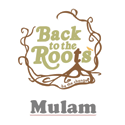Sandal Wood Carvings
MYSORE’S SANDALWOOD CARVINGS
Carvings made of sandalwood
Sandalwood is one of the oldest fragrances known to man, and it has religious significance, making it a highly valued and sought-after item in artefacts.Sandalwood carvers can be found in Mysore, Shimoga, and Sorab in the Sirsi foothills, as well as Honavar and Kunta on the coast.
There are two kinds of sandalwood.
- Sriganda
- Nagaganda
Sriganda wood, which is yellowish brown and used for carvings, whereas Nagaganda, which is dark brownish, extracts the oil. The wood is refined and used to make a wide range of products, including deity idols, chariots, decorative pieces such as paper cutters, boxes, name cases, trays, photo frames, and so on, as well as the popular elephant jali. Though it is very expensive, wood is creating wonders.
History
India gives birth to a rich tradition that is praised all over the globe. The usage of sandalwood is mentioned in the Ramayana, by Hindus, and Buddhists in rituals and also as incense sticks.
Curvers’ engravers’ implements:
The basic tools used by sandalwood carvers include a saw, plane, mallet, honed or fine-grained hard stone, and a variety of different chisels in various shapes and sizes.
The most conventional styles of pieces are carved by the carvers.
The Mysore carvers also produce items like statues of gods like Shiva and Shati, lotus motifs, raja-ranis (king and queen) of Red Sandal Wood, and mythical creatures.
Conclusion:
The sandalwood resource in india is currently threatned by four factors fire Smuggling, livestock browsing, and spike disease The government of India and state governments should protect our rich culture from the aforementioned factors and find a solution to forest fires. Forest officials should take tough measures to punish smuggling gangs.

